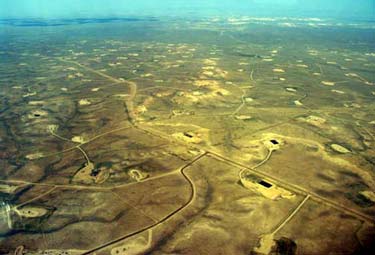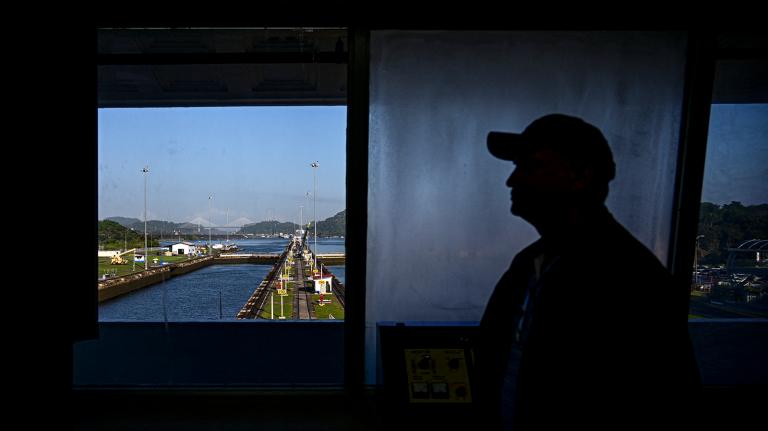
EcoflightWyoming’s Jonah Field.
In the latter days of the George W. Bush presidency, I found myself nursing a hangover on an early-morning flight from Missoula, Mont., to Denver. I’d missed my plane the day before and decided to spend the evening with an old friend, finding our way to the bottom of a bottle of whiskey.
Much to my horror, the woman who plopped down in the seat next to me that woozy morning-after turned out to be a high-level official in Bush’s Interior Department — the branch of government that keeps an eye on the national parks and monuments and other public lands, from Ellis Island to Yosemite.
I was the editor of an environmental magazine at the time, and I’d skewered this woman and the administration’s drill-mine-log-everything policies in print. Now here I was, strapped into a chair right next to hers — and battling a mean case of crapulence to boot.
Come to find out, this woman was feeling a little hungover herself — not from too much drinking, but from the development binge she’d helped facilitate on the public domain. (A binge that, incidentally, included a few well-documented benders featuring Interior Department staffers and oil company employees.)
As the plane lifted off, I listened to her halfhearted defense of Bush’s policies of opening huge blocks of the Western landscape to oil and gas drilling and prayed for the flight attendant to show up with coffee. Admittedly, I didn’t have a leg to stand on, riding as I was in a gas-guzzling, globe-torching airplane halfway across the West, but happily, the view out the window made my argument for me.
There, burned into the Wyoming high desert, was a scene of unholy disaster. Oil and gas companies had raged across the sagebrush, leaving a path of utter devastation. A spider’s web of roads and pipelines led to thousands of well pads, where pumps churned the fossil riches from the ground.
I told her about similar drilling, and proposals to use hydraulic fracturing, around my hometown.
That’s what you get, she said, when oilmen are running the country.
Two years later, I stood in the frigid January chill in front of the war memorial in downtown Baltimore, my 4-year-old daughter on my shoulders, bundled in layers of wool and fleece. We’d come to see Barack Obama, who had just been elected to be the next president of the United States, and was making a whistle stop in Baltimore en route to his inauguration in Washington, D.C.
Obama had run for the presidency promising to undo much of the damage that Bush & Co. had done — to the country’s reputation abroad, to the economy at home, and to the land and the air. The energy he brought to that mostly African American city, a town that had seen far more than its share of hard times, was electrifying: finally, a president who would put people before profits, who would end foreign wars and focus on rebuilding here at home.
Almost four years after that day in Baltimore, it’s easy to look at the mark that Obama has left on the landscape, the climate, our cities, the economy, and feel like those hopes have been dashed.
Oil production has increased in the U.S. under Obama’s hand, as he is fond of reminding us. The Obama administration has put in place tough new regulations on coal-fired power plants, but on energy, it’s “all-of-the-above,” and on the climate, he hasn’t shown the leadership many had imagined. Obama’s urban policies have been clear-eyed, but, as with so many things, underfunded.
Still, on Tuesday, we have a stark choice to make at the polls. Hurricane Sandy has done a fine job of illuminating the differences between the two presidential candidates: On one hand, a man who snapped to, threw partisan politics to the wind, and got busy mobilizing the troops to help the millions affected by the storm; on the other, a man who has said he wants to privatize disaster relief and blushes and seizes up at the very mention of what we’ve done to the climate.
Some commentators have predicted that a President Romney would have a hard time making good on his promises to roll back environmental protections and open the public lands to more drilling and development. (At a rally last summer, he quipped, “I don’t know what the purpose is” of all this federal land in the West. Harold Hamm, his chief energy adviser, has made billions on — you guessed it — oil.)
But if there’s one thing that George W. Bush and the four hard years since his departure from the White House have taught us, it’s that it is far easier to blow things up than it is to put them back together again. Baltimore and cities like it continue to struggle, despite right-minded policies in Washington. The national economy is still a shambles. The globe continues to warm.
The last time I flew over the Wyoming gas fields, the scene hadn’t changed much. The gas boom is still going full throttle, thanks in part to deals the Bush administration cut before leaving office.
That view from an airplane window is a vivid reminder of the price we’re still paying for eight years of environmental rollbacks, just as the scenes of Hurricane Sandy show the price our kids and grandkids will pay for years of drill-mine-log-everything policies.
The last four years are littered with disappointment, but they at least show us that there has been a shift in priorities — a shift that could quickly be undone if we decide to let oilmen run the show again.



